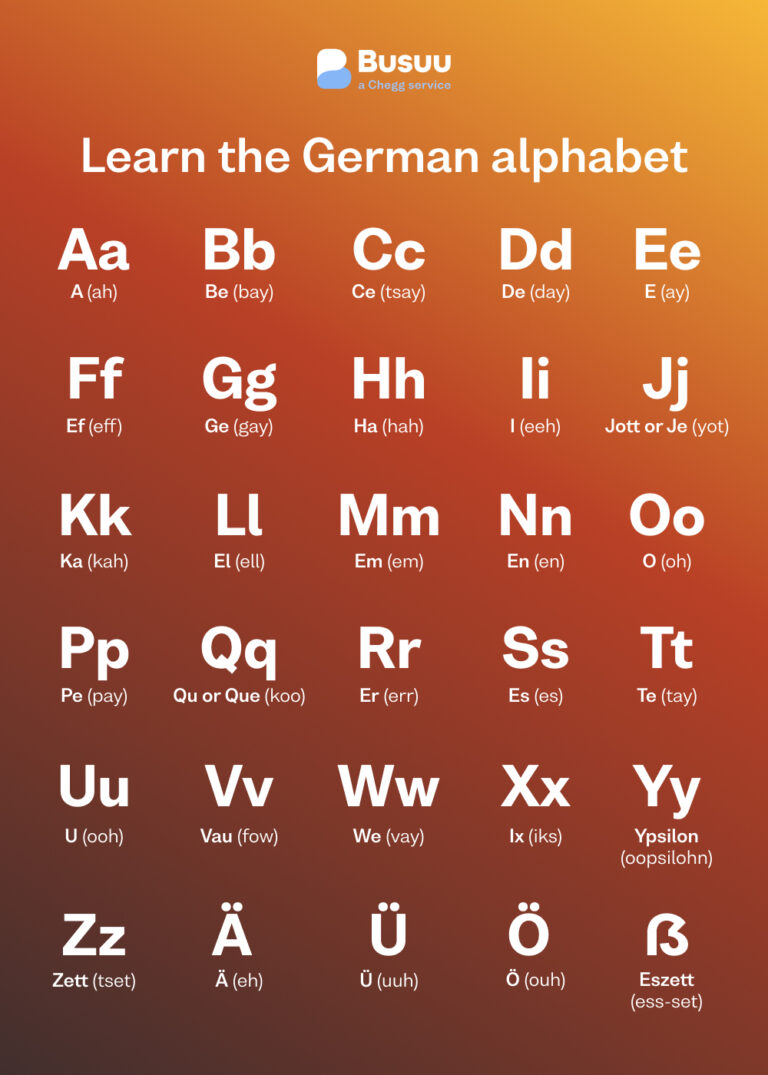Car Brands And Names: Navigating the Automotive Identity Landscape
Car Brands And Names: Navigating the Automotive Identity Landscape cars.truckstrend.com
In the sprawling, high-octane world of automobiles, few elements are as critical, or as complex, as car brands and the names they bestow upon their creations. More than just a logo or a catchy moniker, a car brand represents a promise, a heritage, and a distinct identity in the minds of consumers. It encapsulates everything from engineering prowess and design philosophy to perceived reliability and social status. Vehicle names, in turn, are the individual threads that weave into the larger tapestry of a brand, each designed to evoke specific emotions, functions, or aspirations.
Understanding car brands and names is not merely an academic exercise; it’s essential for anyone navigating the vast automotive market. For manufacturers, it’s about establishing trust and loyalty, differentiating from competitors, and communicating innovation. For consumers, it’s a shortcut to understanding a vehicle’s character, its target audience, and the values it embodies. From the roaring Ferrari to the practical Honda Civic, every brand and name tells a story, influencing purchasing decisions, driving experiences, and even the cultural landscape.
Car Brands And Names: Navigating the Automotive Identity Landscape
The Anatomy of a Car Brand: Beyond the Badge
A car brand is a multi-faceted entity, far more profound than the emblem on the grille. It’s an intricate blend of tangible and intangible attributes that collectively shape its perception and value.
- Logo and Visual Identity: The most immediate identifier, a logo (e.g., Mercedes-Benz’s three-pointed star, Audi’s four rings) is meticulously crafted to convey core values like precision, luxury, or strength. This extends to the overall design language – the signature curves, grilles, and lighting elements that make a brand’s vehicles instantly recognizable.
- Heritage and Storytelling: Many brands leverage their history to build credibility and emotional connection. Ford’s legacy of mass production, Porsche’s racing pedigree, or Jeep’s adventurous spirit are integral parts of their brand narrative, appealing to consumers who identify with these stories.
- Core Values and Promise: What does the brand stand for? Toyota promises reliability and efficiency, Volvo prioritizes safety, and BMW emphasizes "the ultimate driving machine." These promises guide product development and marketing efforts.
- Target Audience and Market Positioning: Brands are strategically positioned to appeal to specific demographics. Luxury brands like Rolls-Royce target the affluent, while brands like Kia focus on value and modern design for a broader market.
- Perceived Quality and Reliability: Years of performance and customer experience build a brand’s reputation for quality. A positive track record translates into consumer trust and higher resale values.
- Innovation and Technology: Brands like Tesla are defined by their commitment to cutting-edge technology and disruption, while others like Subaru are known for specific technologies like symmetrical all-wheel drive.

Car brands are not static; they evolve. As consumer preferences shift, technology advances, and global markets converge, brands must adapt, sometimes through subtle refinements, other times through radical reinventions, such as the pivot towards electrification.
The Art of Naming Vehicles: Crafting an Identity
While the brand defines the manufacturer, the vehicle name defines the specific model. Naming a car is a complex process, blending linguistics, psychology, and market strategy to create a memorable and appropriate identity. Vehicle names typically fall into several categories:

- Alphanumeric Names: Many premium and performance brands use combinations of letters and numbers (e.g., BMW 3 Series, Audi A4, Mercedes-Benz C-Class).
- Pros: Creates a clear hierarchy, facilitates global consistency, conveys precision and engineering.
- Cons: Can be less evocative or memorable, lacks a strong emotional hook.

- Evocative/Descriptive Names: These names aim to stir emotions or describe a vehicle’s intended purpose or character (e.g., Ford Mustang, Honda Civic, Land Rover Defender, Subaru Outback).
- Pros: Highly memorable, strong emotional connection, conveys personality.
- Cons: Can be culturally specific, may not translate well globally, risk of sounding cliché.
- Place-Based Names: Naming cars after cities, states, or geographical features can evoke a sense of adventure, aspiration, or heritage (e.g., Chevrolet Colorado, Hyundai Santa Fe, Nissan Murano, Kia Telluride).
- Pros: Suggests exploration, can be aspirational, often easy to pronounce.
- Cons: Relevance can be lost if the place is unfamiliar, can feel generic.
- Animal Names: Imparting traits like speed, strength, or agility (e.g., Dodge Viper, Ford Bronco, Jaguar).
- Pros: Powerful imagery, universally understood traits, recognizable.
- Cons: Can sometimes feel overused or aggressive for certain segments.
- Mythological/Historical Names: Drawing on legends or historical figures (e.g., Aston Martin Valkyrie, Tesla).
- Pros: Conveys grandeur, uniqueness, and a sense of heritage or future.
- Cons: Can be niche, may require explanation.
The naming process involves extensive market research, linguistic checks (to avoid unfortunate meanings in other languages), legal clearance, and ensuring the name aligns with the brand’s overall strategy. An effective name is memorable, pronounceable, distinctive, and carries positive connotations.
The Impact of Branding on Consumer Choice
For consumers, brand and name are powerful decision-making shortcuts.
- Trust and Reliability: An established brand with a long history of quality often inspires greater confidence. Consumers are more likely to trust a brand known for durability and low maintenance costs.
- Perception and Status: Brands convey social signals. Driving a luxury brand like Porsche or Ferrari communicates status and success, while a reliable mass-market brand like Toyota suggests practicality and good value.
- Emotional Connection and Loyalty: Consumers often develop strong emotional ties to brands that align with their lifestyle, values, or past positive experiences. This fosters brand loyalty, leading to repeat purchases.
- Resale Value: Strong, reputable brands generally command higher resale values, a significant financial consideration for many buyers.
- Innovation and Technology: Brands that consistently lead in specific areas, such as electric vehicles (Tesla) or advanced safety features (Volvo), attract consumers prioritizing those attributes.
Challenges and Evolution in Car Branding
The automotive industry is undergoing unprecedented transformation, presenting both challenges and opportunities for brands.
- Electrification and Sustainability: The shift to EVs is creating new brands (e.g., Rivian, Lucid) and forcing established brands to reinvent themselves, often by creating new EV sub-brands or distinct model lines (e.g., Mercedes-EQ, Volkswagen ID. series). This involves changing perceptions from combustion engines to silent, electric power.
- Autonomous Driving: As vehicles become more autonomous, the driving experience changes. Brands will need to adapt their identity to focus on connectivity, comfort, and the "experience" of being transported, rather than just the "thrill of driving."
- Shared Mobility and Subscription Models: The move away from traditional ownership challenges the very concept of brand loyalty tied to personal property. Brands might need to focus on service, accessibility, and fleet management.
- Globalization vs. Localization: Maintaining a consistent global brand image while appealing to diverse local tastes and regulations is a constant balancing act.
- Brand Dilution: Expanding a brand too broadly (e.g., a luxury brand introducing overly budget-friendly models) can dilute its core identity and alienate its traditional customer base.
- Rebranding: While sometimes necessary, a full rebrand (e.g., new logo, new name) is a high-stakes gamble that can either revitalize a brand or confuse consumers.
Practical Advice for Consumers
When choosing your next vehicle, consider the brand and name beyond mere aesthetics:
- Research the Brand’s Reputation: Look into its history of reliability, safety ratings, customer service, and environmental practices. Independent reviews and consumer reports are invaluable.
- Understand the Brand’s Core Values: Does the brand align with your priorities? Are you seeking luxury, practicality, performance, or cutting-edge technology?
- Evaluate the Model Name’s Fit: Does the vehicle name evoke the characteristics you’re looking for? A "Trailblazer" suggests adventure, while a "Civic" implies urban efficiency.
- Consider Long-Term Ownership: A strong brand often means better resale value, a wider service network, and easier access to parts.
- Don’t Just Buy the Badge: While brand matters, delve into the specifics of the model itself. Test drive, compare features, and ensure the car meets your individual needs and budget, regardless of the name on the front.
Market Positioning and Key Characteristics of Selected Car Brands
This table provides a generalized overview. Actual prices and market segments can vary greatly depending on specific models, trim levels, and regional markets.
| Brand | Country of Origin | Primary Market Segment | Typical Price Range | Key Brand Attribute / Known For |
|---|---|---|---|---|
| Toyota | Japan | Mass Market / Value | Mid-range | Reliability, Efficiency, Practicality, Hybrid Technology |
| Honda | Japan | Mass Market / Value | Mid-range | Reliability, Engineering, Fuel Efficiency, Driver Engagement |
| Ford | USA | Mass Market / Utility | Entry-level to Premium | Pickups (F-Series), SUVs, American Heritage, Innovation |
| BMW | Germany | Premium / Luxury | Premium to High-end | "Ultimate Driving Machine," Performance, Luxury, Technology |
| Mercedes-Benz | Germany | Luxury / Premium | Premium to Ultra-Luxury | Sophistication, Comfort, Cutting-edge Technology, Prestige |
| Audi | Germany | Premium / Luxury | Premium to High-end | Design, Technology (Quattro AWD), Refinement, Performance |
| Tesla | USA | Electric Vehicle (EV) | High-end | EV Pioneer, Autonomy, Software-driven Innovation, Performance |
| Kia | South Korea | Value / Modern | Entry-level to Mid-range | Value, Design Transformation, Warranty, Feature-rich |
| Volvo | Sweden | Premium / Safety | Mid-range to Premium | Safety Innovation, Scandinavian Design, Practical Luxury |
| Jeep | USA | SUV / Off-Road | Mid-range to High-end | Off-road Capability, Adventure, Iconic Design |
| Ferrari | Italy | Ultra-Luxury / Performance | Ultra-Luxury | Exclusivity, Supercar Performance, Racing Heritage, Design |
| Hyundai | South Korea | Mass Market / Value | Entry-level to Mid-range | Value, Warranty, Rapid Improvement, Design, Technology |
| Subaru | Japan | Niche / Outdoor | Mid-range | All-Wheel Drive (AWD), Safety, Outdoor Lifestyle, Durability |
Frequently Asked Questions (FAQ)
Q1: Why do car companies use alphanumeric names (e.g., BMW 3 Series, Audi A4)?
A1: Alphanumeric names offer several advantages: they create a clear hierarchy within a brand’s lineup, convey a sense of precision and engineering, and are easily translatable and pronounceable across global markets, avoiding cultural sensitivities or misinterpretations.
Q2: What’s the difference between a car brand and a marque?
A2: In the automotive context, "brand" and "marque" are often used interchangeably, referring to the manufacturer’s identity (e.g., Ford, Toyota). Technically, "marque" is a more traditional term for a specific make of car, often associated with a distinct badge or emblem. For practical purposes, they convey the same meaning of a distinct automotive manufacturer.
Q3: How do new car brands emerge in the market?
A3: New brands can emerge through various avenues: as startups (like Tesla, Rivian) leveraging new technologies (especially EVs), as spin-offs from established manufacturers (e.g., Genesis from Hyundai, Polestar from Volvo), or through mergers and acquisitions creating new entities. They typically focus on a specific niche or a disruptive technology to gain traction.
Q4: Do car brand names influence resale value?
A4: Absolutely. Brands with strong reputations for reliability, quality, and consumer demand tend to hold their value better in the used car market. Conversely, brands perceived as less reliable or with limited market appeal may depreciate more quickly. The specific model name can also play a role, especially if it’s iconic or highly desirable.
Q5: What’s the significance of a car’s logo?
A5: A car’s logo is its primary visual identifier and a powerful symbol of its brand. It condenses the brand’s heritage, values, and aspirations into a single image. A well-designed logo is memorable, distinctive, and instantly communicates the brand’s essence, fostering recognition and emotional connection with consumers.
Conclusion
Car brands and names are the bedrock of the automotive industry, serving as far more than mere labels. They are powerful conduits of identity, reputation, and aspiration, deeply influencing consumer perceptions and purchasing decisions. From the meticulous engineering implied by a German luxury brand to the rugged adventure promised by an SUV’s evocative name, every choice by a manufacturer in branding and naming is deliberate and strategic. For the consumer, understanding this intricate tapestry of identities empowers them to make more informed choices, aligning their vehicle with their values, needs, and lifestyle. As the automotive world continues its rapid evolution, the art and science of car brands and names will remain at the heart of how we connect with, choose, and experience our vehicles.




